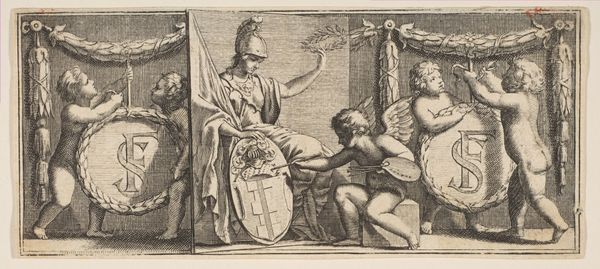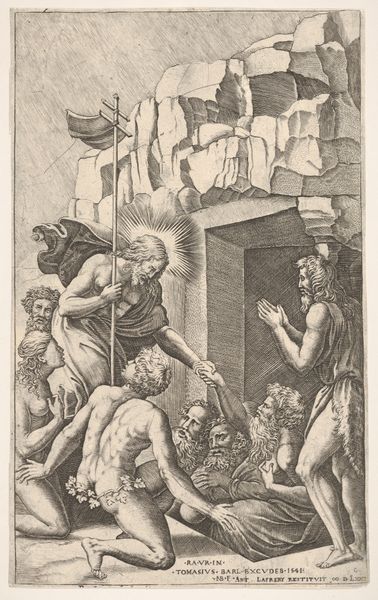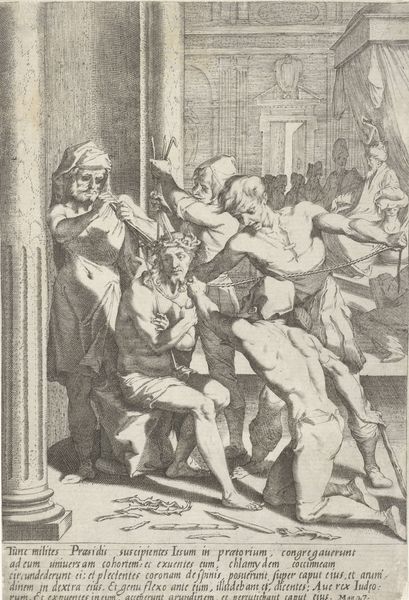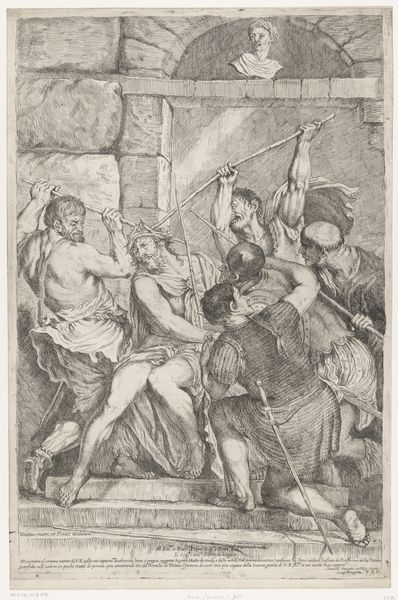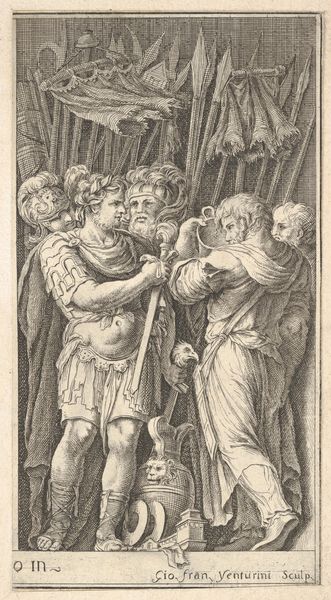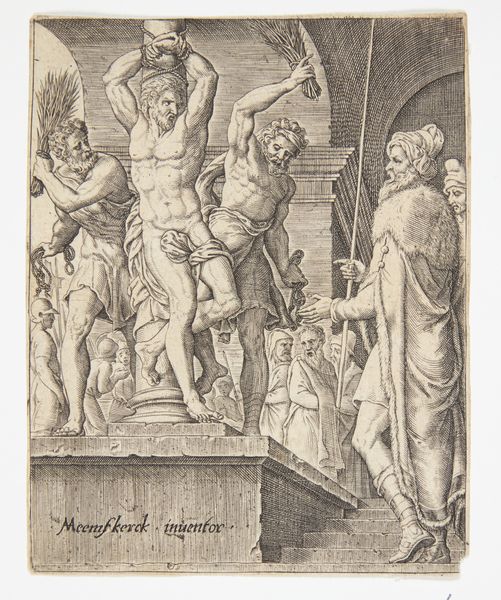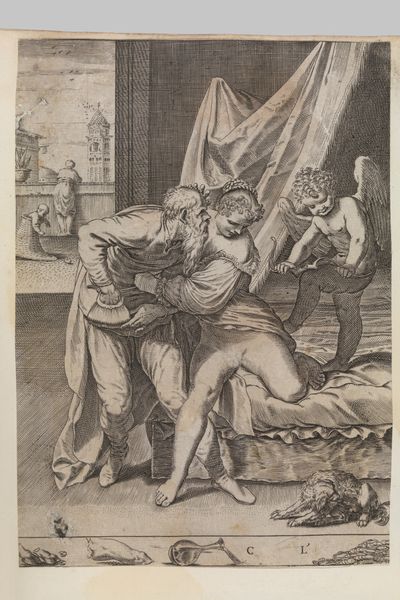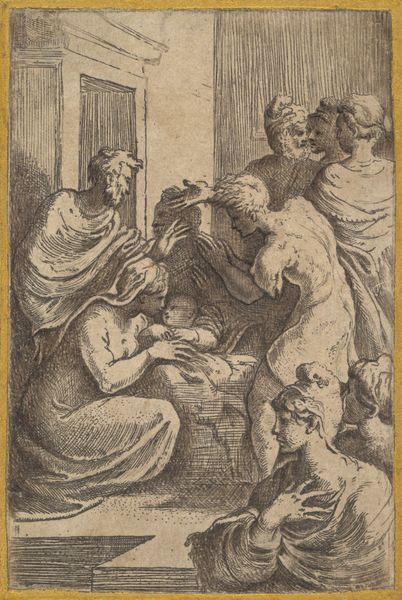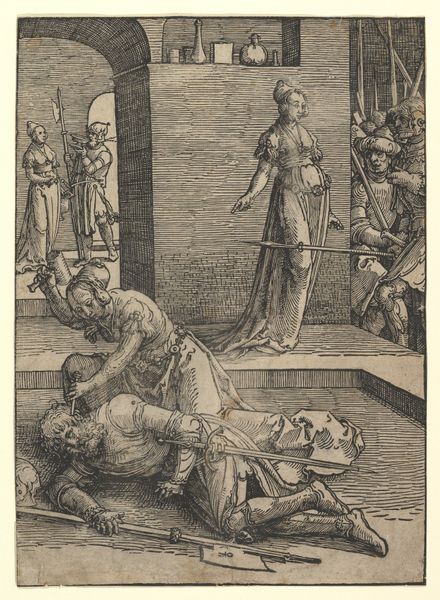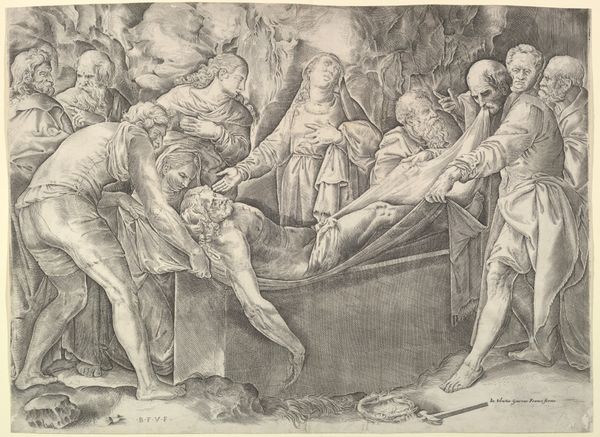
drawing, print, engraving
#
drawing
# print
#
11_renaissance
#
female-nude
#
soldier
#
men
#
history-painting
#
engraving
#
male-nude
Dimensions: Sheet (trimmed/oval): 12 15/16 × 8 1/2 in. (32.8 × 21.6 cm)
Copyright: Public Domain
Editor: Here we have "Timocleia Before Alexander," an engraving made sometime between 1535 and 1550 by Léon Davent. I find the contrast between the clean lines of Timocleia and the more chaotic rendering of the surrounding figures really striking. What aspects of this print catch your eye? Curator: What interests me immediately is the mode of production. Davent, working during the Renaissance, is reproducing a narrative for mass consumption through the relatively new medium of engraving. How does the accessibility of prints affect our understanding of historical and mythological subjects? Editor: That's interesting. It's like he's democratizing the story by making it more widely available. Do you think the choice of engraving, and the way it lends itself to reproducible images, alters the impact of the subject matter itself? Curator: Absolutely. Consider the labor involved. Unlike unique paintings, engravings facilitate a repetitive process. The act of reproduction shifts the emphasis from unique artistic genius to a wider circulation of ideas and representations. Were there other accessible representations that served a similar purpose, and who would have owned such an engraving? Editor: So, it becomes less about individual artistry and more about the mechanics of spreading this image and, with it, the story of Timocleia. Were engravings used in other art forms at the time, perhaps to disseminate certain aesthetics or political viewpoints? Curator: Precisely! This allows for wider cultural understanding of aesthetic tastes, even those imposed. How might this change our reading of this image specifically if we think about where it could be reproduced – maybe even on domestic objects? Editor: Thinking about it that way, it seems like the print isn't just depicting a historical event, but also participating in a much larger process of shaping cultural memory through accessible imagery. Curator: Indeed. It brings up questions of value and circulation – how the meaning of this image shifts when it becomes a commodity, reproduced and distributed across different social strata. Editor: It’s amazing to consider this piece as a kind of historical mass media, influencing people’s understanding of this subject and influencing visual styles of the time. Thanks for the insight. Curator: The ability to reproduce such engravings makes it ripe for a Materialist analysis. We have together revealed that a singular historical representation is more than just an image: it is a commodity shaping culture through mechanical reproducibility.
Comments
No comments
Be the first to comment and join the conversation on the ultimate creative platform.

